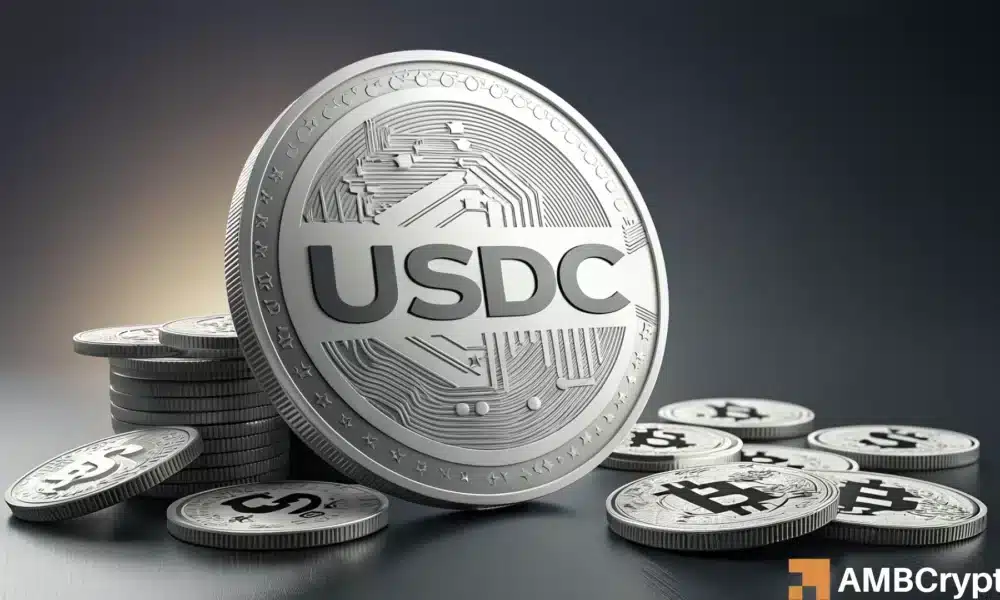The stablecoin sector is currently witnessing a notable transformation, with USDC making significant strides against the dominant player, Tether [USDT]. While alternative digital currencies are facing challenges in gaining traction, a growing number of investors are turning to USDC, which is fueling its upward trajectory.
At present, USDC’s ascendency is nearing a crucial resistance point. There are indications that current patterns are reminiscent of those observed in 2021, sparking speculation about broader market implications.
As USDC’s expansion potentially signals increased risk aversion and bearish trends, a decline in its dominance could set the stage for a market recovery and new peaks.
The Rise of USDC in the Stablecoin Arena
From 2023 onwards, the stablecoin market has witnessed substantial growth, largely propelled by Tether. However, recent trends point to USDC gaining momentum, especially following recent selloffs of alternative digital assets.
A notable portion of these selloff proceeds has been converted into USDC, underscoring its rising popularity among investors.
USDC enjoys key advantages, including regulatory clarity and robust institutional support, making it an attractive option for traders and institutions seeking stability amid market volatility.
In contrast to USDT’s transparency challenges, USDC benefits from comprehensive reserve audits and adherence to U.S. regulations. This factor appears to instill confidence in investors.
Exploring Beyond USDT and USDC
While USDT and USDC continue to dominate the stablecoin market, smaller stablecoins have seen limited growth since 2023.
The collective market capitalization of these minor stablecoins has remained relatively flat, underscoring a lack of significant innovation and adoption outside the two primary players.
This stagnation raises uncertainties about the future of the stablecoin landscape. Alternative projects encounter hurdles like regulatory ambiguity, liquidity constraints, and inadequate institutional backing. The increasing consolidation around USDT and USDC hints at a maturing market, where only the most resilient stablecoins will stay relevant.
Nevertheless, this dominance might stifle competition and diversity in the ecosystem. With mounting regulatory pressures, the sustained uptrend of USDT and USDC could reinforce their market grip, reducing the availability of decentralized alternatives for traders and institutions.

